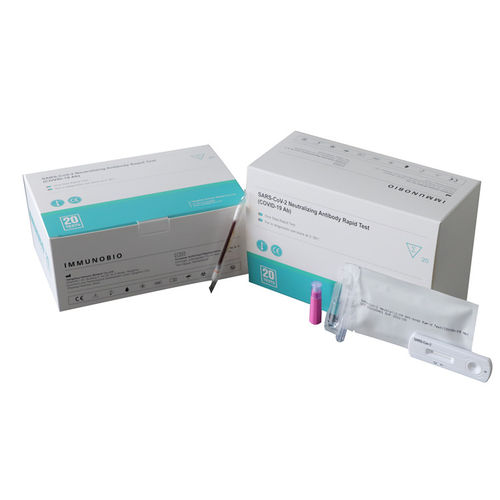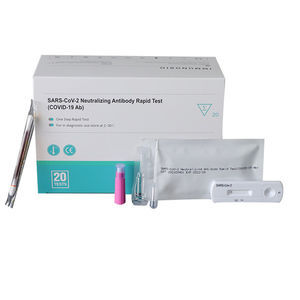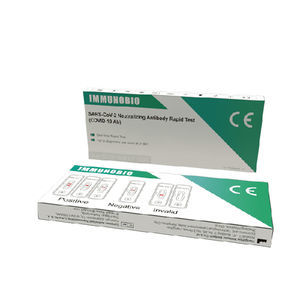
- Laboratory
- Laboratory medicine
- COVID-19 test kit
- Hangzhou Immuno Biotech Co., Ltd
COVID-19 test kit for neutralizing antibodycoronaviruswhole blood
Add to favorites
Compare this product
Characteristics
- Applications
- COVID-19
- Tested parameter
- for neutralizing antibody
- Micro-organism
- coronavirus
- Sample type
- whole blood
- Format
- strip
- Result display time
15 min
Description
What is neutralizing antibody? What is the difference with other antibodies?
First understand what an antibody is: it refers to a protective protein produced by the body due to the stimulation of an antigen. Can be divided into 5 categories including IgM, IgD, IgG, IgA and IgE. Among them, IgG and IgM are important protective antibodies. Their production time and effects are different. IgM is the “vanguard” of the body’s anti-infection immunity, and IgG is the body’s “main force” in the fight against infection. Using this feature, IgG IgM and IgM are often used as important serological indicators for the diagnosis of infection.
Neutralizing antibody is a protective antibody produced by the immune system, which can recognize and prevent pathogens from binding to host cells and exert a protective effect. For the new crown, the new crown neutralizing antibody is an antibody that competes to bind to the S protein on the surface of the virus and blocks the S protein to prevent the virus from invading cells. Neutralizing antibodies, as antibodies with antiviral activity, account for only a small part of antiviral antibodies.
For evaluating vaccine effects, monitoring infection rates, herd immunity and protective immunity, and evaluating vaccine efficacy during clinical trials and after mass vaccination, it is necessary to determine the new coronavirus neutralizing antibodies.
The color intensity of the test line region (T) was inversely proportional to the concentration of anti-SARS-COV-2 neutralizing antibodies in the sample. The lower the color intensity of T line, the higher the concentration of neutralizing antibody in the sample .
Catalogs
No catalogs are available for this product.
See all of Hangzhou Immuno Biotech Co., Ltd‘s catalogsOther Hangzhou Immuno Biotech Co., Ltd products
Neutralizing Antibody Test Kit
Related Searches
- Assay kit
- Blood assay kit
- Blood rapid diagnostic test
- Rapid lateral flow test
- Immunoassay rapid diagnostic test
- Cassette rapid diagnostic test
- Rapid virus test
- Respiratory infection test kit
- Whole blood detection kit
- Serum rapid diagnostic test
- Plasma rapid diagnostic test
- Whole blood rapid diagnostic test
- COVID-19 detection kit
- Rapid respiratory infection test
- Strip detection kit
- COVID-19 rapid diagnostic test
- Test strip
- Strip rapid diagnostic test
- Antibody assay kit
- Clinical rapid diagnostic test
*Prices are pre-tax. They exclude delivery charges and customs duties and do not include additional charges for installation or activation options. Prices are indicative only and may vary by country, with changes to the cost of raw materials and exchange rates.




